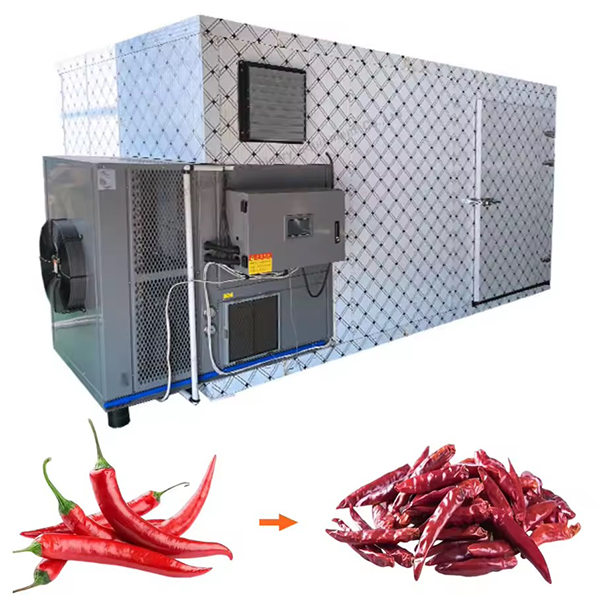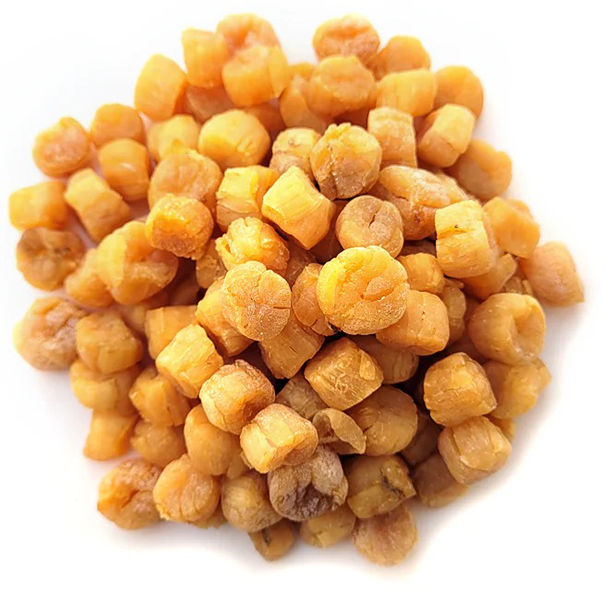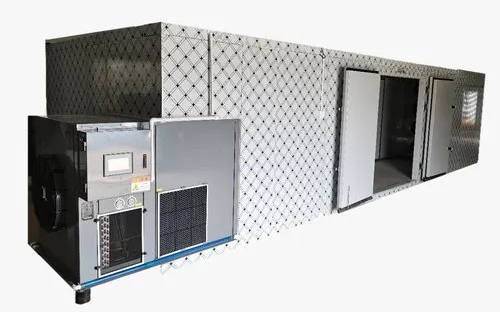
Content Menu
● Understanding Heat Pump Dryers
>> Key Components of a Heat Pump Dryer
● Common Reasons for Decreased Efficiency
>> 1. Clogged Filters
>> 2. Blocked Vents
>> 3. Overloading the Dryer
>> 4. Faulty Sensors
>> 5. Temperature Settings
● Maintaining Your Heat Pump Dryer
● The Role of Food Drying Machines
● Benefits of Using Food Drying Machines
● How Heat Pump Technology Works in Food Drying Machines
● Choosing the Right Food Drying Machine
● Troubleshooting Common Issues in Food Drying Machines
>> 1. Inconsistent Drying Results
>> 2. Overheating
>> 3. Excessive Noise Levels
● Conclusion
● FAQ
>> 1. What should I do if my heat pump dryer is not drying at all?
>> 2. How often should I clean my heat pump dryer's lint filter?
>> 3. Can I overload my heat pump dryer?
>> 4. What temperature settings should I use for different fabrics?
>> 5. How can I tell if my moisture sensors are malfunctioning?
Heat pump dryers have become increasingly popular due to their energy efficiency and ability to dry clothes effectively. However, users may occasionally find that their heat pump dryer is not performing as well as it once did. This article will explore the common reasons for decreased efficiency in heat pump dryers, particularly in the context of food drying machines, and provide solutions to improve performance.

Understanding Heat Pump Dryers
Heat pump dryers work by using a refrigerant system to extract moisture from clothes. Unlike traditional dryers that expel hot air, heat pump dryers recycle air, making them more energy-efficient. They operate at lower temperatures, which helps protect delicate fabrics and reduces energy consumption.
Key Components of a Heat Pump Dryer
- Compressor: Compresses the refrigerant, increasing its temperature and pressure.
- Evaporator: Absorbs moisture from the air inside the dryer.
- Condenser: Releases moisture outside, allowing the air to be reheated and reused.
- Fan: Circulates air throughout the dryer.
Common Reasons for Decreased Efficiency
If your heat pump dryer is not drying clothes as efficiently as before, consider the following factors:
1. Clogged Filters
One of the most common issues is clogged filters. Lint and debris can accumulate in the lint filter and heat exchanger, obstructing airflow and reducing efficiency.
- Solution: Clean or replace filters regularly to ensure optimal airflow.
2. Blocked Vents
Blocked vents can prevent hot air from circulating properly, leading to longer drying times.
- Solution: Inspect and clean vent ducts regularly to remove any obstructions.
3. Overloading the Dryer
Overloading your heat pump dryer can hinder its ability to dry clothes efficiently. When too many items are packed into the drum, airflow is restricted.
- Solution: Avoid overloading the dryer; follow manufacturer guidelines for load capacity.
4. Faulty Sensors
Heat pump dryers are equipped with moisture sensors that detect when clothes are dry. If these sensors malfunction, they may not accurately assess moisture levels.
- Solution: Check the sensors for dirt or damage; clean or replace them if necessary.
5. Temperature Settings
Incorrect temperature settings can also impact drying efficiency. Using lower settings may prolong drying times.
- Solution: Ensure you are using the appropriate settings for the type of fabric being dried.
Maintaining Your Heat Pump Dryer
Regular maintenance is essential for ensuring your heat pump dryer operates efficiently. Here are some tips:
- Clean the lint filter after every use to prevent buildup.
- Inspect and clean the heat exchanger periodically.
- Check venting systems for blockages or damage.
- Schedule professional servicing annually to catch any potential issues early.
The Role of Food Drying Machines
While this article focuses on heat pump dryers used for laundry, it's worth noting that similar principles apply to food drying machines. These machines use heat pump technology to dehydrate fruits, vegetables, and other foods efficiently.

Benefits of Using Food Drying Machines
Food drying machines offer several advantages:
- Nutritional Preservation: Retains vitamins and minerals in food.
- Extended Shelf Life: Dried foods last longer without refrigeration.
- Energy Efficiency: Uses less energy compared to traditional drying methods.
How Heat Pump Technology Works in Food Drying Machines
Heat pump technology in food drying machines operates similarly to that in laundry dryers but is specifically designed for food products. The process involves:
1. Air Circulation: Warm air is circulated around the food items, allowing moisture to evaporate.
2. Condensation: The moisture-laden air passes through a condenser where it cools down, causing water vapor to condense into liquid form.
3. Recycling Air: The cooled air is then reheated and recirculated back into the drying chamber, making it an efficient process that minimizes energy waste.
This method ensures that food items dry evenly while retaining their flavor and nutritional value.
Choosing the Right Food Drying Machine
When selecting a food drying machine, consider factors such as:
- Capacity: Choose a model that fits your volume needs—whether for personal use or commercial purposes.
- Temperature Control: Look for machines with adjustable temperature settings to accommodate different types of foods.
- Energy Efficiency Ratings: Opt for models with high energy efficiency ratings to save on electricity costs over time.
Troubleshooting Common Issues in Food Drying Machines
Just like heat pump dryers for laundry, food drying machines can also experience efficiency issues. Here are some common problems and their solutions:
1. Inconsistent Drying Results
If some batches of food are dried perfectly while others remain moist:
- Solution: Ensure even spacing between food items on trays to allow proper airflow.
2. Overheating
If your food drying machine overheats:
- Solution: Check for blockages in air vents or fans and ensure that you are using appropriate temperature settings for your specific foods.
3. Excessive Noise Levels
Unusual noises can indicate mechanical issues:
- Solution: Inspect fans and motors for any obstructions or wear; consider professional servicing if necessary.
Conclusion
In conclusion, if your heat pump dryer is not drying as efficiently as before, it may be due to clogged filters, blocked vents, overloading, faulty sensors, or incorrect temperature settings. Regular maintenance is crucial for optimal performance. Understanding these factors can help you troubleshoot issues effectively and maintain your appliance's efficiency over time.
For those interested in food drying machines, utilizing heat pump technology offers numerous benefits including energy efficiency and nutritional preservation. Proper selection and maintenance of these machines will ensure they operate at peak performance.

FAQ
1. What should I do if my heat pump dryer is not drying at all?
If your heat pump dryer isn't drying at all, check if it's receiving power and ensure that all doors are securely closed. Inspect filters and vents for clogs that may be obstructing airflow.
2. How often should I clean my heat pump dryer's lint filter?
You should clean your heat pump dryer's lint filter after every use to maintain optimal airflow and efficiency.
3. Can I overload my heat pump dryer?
Overloading your heat pump dryer can hinder its performance by restricting airflow. Always follow manufacturer guidelines regarding load capacity.
4. What temperature settings should I use for different fabrics?
Refer to your dryer's manual for specific temperature settings for various fabrics. Generally, delicate fabrics require lower temperatures while heavier fabrics can handle higher settings.
5. How can I tell if my moisture sensors are malfunctioning?
If your clothes remain damp at the end of a cycle despite being set correctly, it may indicate a malfunctioning moisture sensor. Inspect them for dirt or damage and clean or replace as needed.











